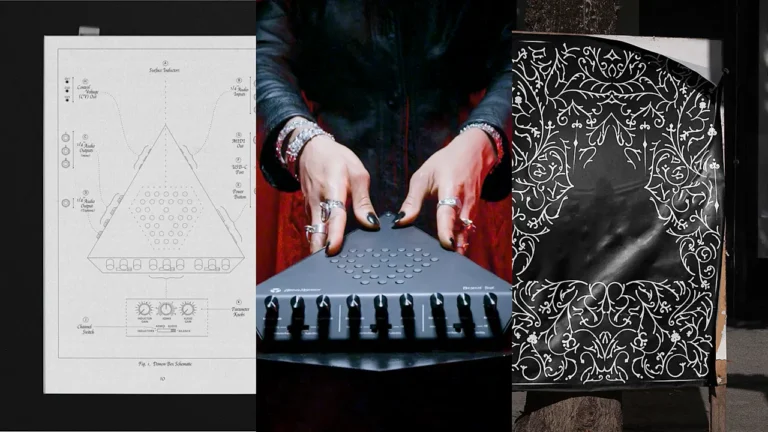
The workplace AI narrative has been dominated by fears of human replacement. But forward-thinking leaders are discovering AI’s real power: helping employees become more human, not less. Shifting from workplaces of human doings to a collective of activated human beings.
And while AI can absolutely help eliminate busywork, opening employees’ time for more impactful work and meaningful progress, its impact can go far beyond productivity. In fact, having studied power shifts in modern workplaces for many years, I think the companies that will thrive moving forward will focus more on using these tools to improve employee well-being.
Smart leaders should approach AI implementation through what I call “human-first integration”—using technology to restore conditions where people can do their best thinking, creating, and collaborating. Here are a few use cases you might not have thought of for AI that can help your employees feel more supported in work and life.
1. Make it easier to understand benefits
AI can create “invisible support systems” that proactively connect employees with resources without navigating complex HR systems or overcoming the stigma of asking for help.
Most employees leave thousands of dollars in wellness stipends, EAP services, and professional development funds unused simply because they don’t understand what qualifies or how to access them. AI is great at analyzing individual situations (e.g., project stress, family circumstances mentioned in calendar entries, or expressed career goals) and suggesting relevant solutions with eligibility and application guidance.
A custom GPT can be built, either in-house or via an AI consultant, by uploading a company’s benefits guides, policies, and FAQs into an organization’s private OpenAI workspace, where access can be limited to employees only. By giving the GPT simple instructions like “Answer employee questions about benefits in plain language,” the tool becomes an easy, secure way for staff to get clear and consistent answers about their benefits.
2. Create safe reporting for workplace harm
Traditional HR reporting makes employees navigate complex hierarchies and risk retaliation. AI-powered anonymous reporting systems can collect detailed incident information, identify patterns across reports, and route concerns to appropriate parties while protecting reporter identity.
For example, AllVoices is an AI-fueled employee relations platform that offers an employee relations copilot, a whistleblower hotline and an anonymous reporting tool to build trust and safety while also encouraging a culture of speaking up when something is wrong. The beauty is the AI is customized to the organizations systems, processes, and needs then it gathers anonymous incident information, can guide employees through the submission process and offer supportive resources, but doesn’t make decisions that stays within human control.
3. Establish low-risk feedback loops
Implement micro-feedback through check-ins triggered by specific events like meetings, high-stress phases, or team restructuring. This enables real-time pattern recognition and intervention before problems escalate.
In my work coaching teams, I’ve seen how powerful this intentional ongoing approach can be as it shifts behavior from dreading the heavy annual review grading system to small lift, routine experiences of being heard and valued. I gather insights from individual coaching sessions and share aggregated themes with leadership, protecting individual privacy while surfacing patterns to help address systemic challenges before they become widespread problems.
While AI won’t be able to reach the same level of depth and nuance as live coaching with a human would, the ability to automate checkpoints that are incorporated in larger team strategy will build trust and reduce fear of experience sharing. Try leveraging engagement platforms like CultureAmp that use AI to facilitate a continuous feedback loop by automating the delivery of pulse surveys (short, focused check-ins that can be triggered by specific events), providing real-time sentiment and theme analysis of the results, and recommending next steps.
4. Act on early warning signs for interpersonal conflict
AI can analyze communication patterns and misunderstandings before tension becomes destructive. It can suggest resolution approaches, connect people with mediation resources, and track effectiveness. Most importantly, AI’s ability to identify and interrupt microaggressions can help recipients validate perceptions and educate those causing unintentional harm.
Opre is an AI-driven platform that uses meeting notes and other ongoing communications to provide professional development recommendations and recognize friction points. WorkHuman offers an Inclusive Advisor feature that identifies and mitigates unconscious bias in real-time.
5. Support self-discovery and team understanding
I often guide clients through what I call “mesearch,” a process of identifying a personalized leadership profile through assessments and reflection that equips them with language to describe their authentic leadership style. Now, imagine an AI platform extending this process across an entire team, enabling people not only to articulate their strengths but also to understand and align with those of their colleagues, while intelligently matching roles in complex situations so energy and efforts are optimized to meet challenges successfully.
For instance, if your team has taken assessments like the Clifton Strengths, DISC, Myers-Briggs, Predictive Index or HBDI, you can prompt your AI platform to take the assessment findings of each team member and identify where your team is likely to collectively shine. Think: Who will work best together in various scenarios, where strengths overlap and potential gaps may be, and where their diverse perspectives will benefit an initiative. This is great for staffing projects, assigning mentors, and for intentional hiring decisions to build a robust, resilient team.
Machines Supporting Humans
Organizations thriving in the coming decade won’t use AI most extensively, but most intentionally. This requires leaders who understand technology is only as powerful as the human systems it supports.
As a mixed-race, millennial woman who has navigated predominantly white, male-dominated industries, I’ve seen how traditional power structures prioritize performance over people. AI gives us a chance to build workplaces that amplify human potential rather than exploit it.
According to McKinsey & Co, over the next three years, 92% of companies plan to increase their AI investments. Gen AI is already here, it’s up to leaders to embrace this paradigm shifting opportunity effectively.
The future isn’t humans versus machines—it’s humans plus machines, creating conditions where people can think, create, and connect in ways that drive both individual fulfillment and organizational success.




